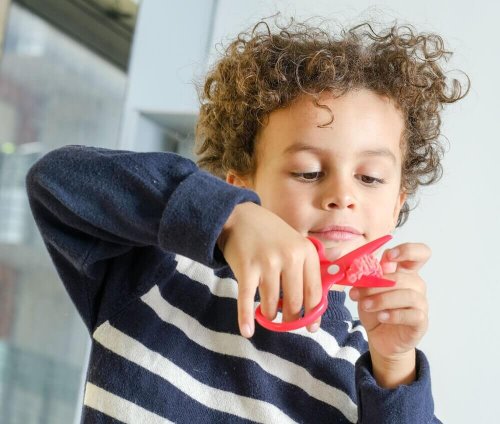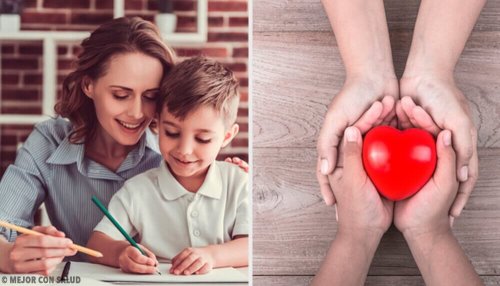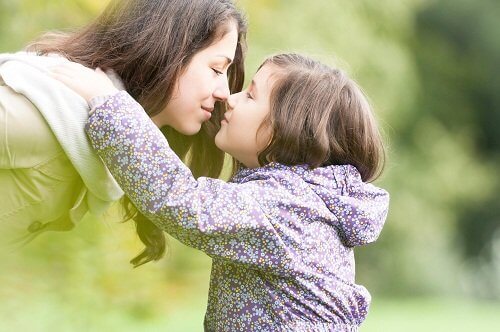Teach Your Children How to Control Their Emotions

Upon turning 2 years old, every child should start learning how to control their emotions. It’s not an easy job! If as adults, we already have a hard time as it is to properly manage how we feel, how can we teach our children how to control what they feel?
But first, ask yourself this question: How many times has your child seen you lose your patience in a traffic jam? How many times has he or she seen you lie or interrupt someone as they spoke?
Now turn the tables and think: How many times have you seen your child teasing their siblings or lie despite knowing it’s not the right thing to do?
Both children and adults have similar answers: we all get carried away by an emotion that fills us in a given moment. Of course, it’s happened to everyone at some point, regardless of how old they are.
The main thing we need to understand is that correctly processing our emotions is a fundamental part of the mental and emotional balance.
Knowing, recognizing and processing our emotions

These days, teaching our children also involves helping them manage their emotions. A child who can learn how to process and control their emotions can improve many other aspects in his or her life, such as:
- Better attention spans
- Studying more and higher academic success
- Be more apt in resolving conflicts with classmates
- Better behavior
- Increased thoughtfulness for others
How can you teach them? The key lies in knowing, recognizing, and processing emotions.
Want to know more?: 5 Children’s Books Your Child Should Read Before They Turn 6
Strategies for helping children process and control their emotions
Below are some of the emotion-controlling strategies that we can use to teach our children.
Identifying emotions
When turning 5 years old, children should identify whether they’re sad or mad. In addition, they should know how to express it and respond in a constructive manner
Help your children express and know their emotions by using expressions such as:
- “We had such a good time at Grandma’s. You were so happy.”
- “I know that you’re sad because your sister didn’t want to play with you.”
Upon turning 10 or 11 years old, emotions become more complicated but they still need to learn how to identify them.
Clarify expectations
Avoid surprises that could set off an angry response. Your children should know what’s going to happen, even if they won’t like it or don’t want to do it. At the same time, be firm in your decision.
For example:
- “We’re going to your aunt’s because I have to talk with her. Bring along some toys to play with while we talk.”
- “I want you to know that in a few minutes, we’re going to leave the park. We have to go home.”
Make a decision
Prepare a quiet, comfortable place at home with pillows or cushions where your children can go to reflect when things don’t go the way they wanted. By doing so, they’ll know that you care about their feelings.
Self-control
In order to control our emotions, we need to be patient and wait them out. While going on a walk, try playing a game with your children and tell them that until you say a certain word, they can’t move and have to wait (frozen). When you say the word, they can move again.
Develop empathy
Invite your children to put themselves in others’ shoes. Accept that you, too, can feel what others feel. Questions are a great tool for making children reflect on what they feel and their actions.
For example:
- “I know that you’re hungry and want to eat. I also get crabby when I’m hungry, but we have to wait for mom.”
- “How do you think your sister felt after you yelled at her like that?”
Encourage and praise

For example:
- “You were great! You didn’t interrupt me when I was talking on the phone. I appreciate that you waited for me.”
- “Thanks for helping me set the table. For helping me, you can choose your snack.”
Actions and consequences
Talking and coming to an agreement on something is better than responding aggressively or violently. If a child behaves poorly with someone, he or she needs to learn how to apologize. In addition, children should learn how to forgive others when treated poorly.
Actions have consequences, so we all need to learn the importance of making good decisions. As an example, you could tell your children something like:
- “X is still your friend, even if he or she didn’t share the toy.”
- “Even though X hit you, you could always forgive him or her and still be friends.”
Be an example
It’s in the times where your child is being difficult when you have to best show that you’re capable of self-control. Nothing that you say could have a stronger impact than what you do.
If you yell, your children will learn to respond by yelling. If you meet them where they are and talk to them in a calm, low tone, they’ll also learn how to control their anger at all times.
Practice together

In situations where your children can get upset (when their friends don’t share their toys, for example), guide them to find the best way to respond. In addition, help them identify which ways to avoid.
Practicing with your children will help them manage their emotions better in upsetting situations.
Speak calmly
When there’s a problem or an overwhelming situation, your child should learn how to speak without losing it. In order for them to learn how to express the emotions that unsettle them, your example is essential. You can tell them something like:
- “I’m also upset because of the fight, but take a breather. Calm down and tell me what happened.”
- “I’m tired too, but we can take a break and you can continue telling me what happened.”
Hugs
Don’t leave your children alone with their feelings. Show them that you care about their let-downs and frustrations. Hug them, show them that you understand and love them. Trust and safety in your love will help them manage their feelings better.
You didn’t know?: 6 Amazing Benefits of Hugs You Never Knew About
Everything passes

- “You might feel bad now, but I promise that in a few minutes you’ll feel better.”
- “I know that you’re upset, and you might even want to cry, so let it out. You’ll feel better afterward.”
Make the time
Your kids should know that you’ll carve out a moment out of your day to listen to their problems and worries, even if you’re tired, overwhelmed or upset. You should overcome your emotions and give them that time. You can tell them:
- “Tell me how your day was at school.”
- “Did you have a good time at your cousin’s?”
Reflection
Emotions can brighten or darken our life. Helping our children to recognize and control their emotions is one of the best gifts that we could give them.
All cited sources were thoroughly reviewed by our team to ensure their quality, reliability, currency, and validity. The bibliography of this article was considered reliable and of academic or scientific accuracy.
- Cossini, F. C., Rubinstein, W. Y., & Politis, D. G. (2017). ¿ CUÁNTAS SON LAS EMOCIONES BÁSICAS? ESTUDIO PRELIMINAR EN UNA MUESTRA DE ADULTOS MAYORES SANOS. Anuario de Investigaciones, 24, 253-257. https://www.redalyc.org/pdf/3691/369155966032.pdf
- Gordillo, F., Pérez, M. Á., Mestas, L., Salvador, J., Arana, J. M., & López, R. M. (2015). Diferencias en el Reconocimiento de las Emociones en Niños de 6 a 11 Años. Acta de investigación psicológica, 5(1), 1846-1859. https://www.sciencedirect.com/science/article/pii/S2007471915300053
- Cassà, È. L. (2005). La educación emocional en la educación infantil. Revista interuniversitaria de Formación del Profesorado, 19(3), 153-167. https://www.redalyc.org/pdf/274/27411927009.pdf
- Guerrero, R. (2018). Educación emocional y apego. Pautas prácticas para gestionar las emociones en casa y en el aula. https://planetadelibrosar0.cdnstatics.com/libros_contenido_extra/39/38441_Educacion_emociona.pdf
This text is provided for informational purposes only and does not replace consultation with a professional. If in doubt, consult your specialist.








